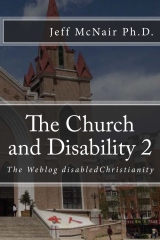5 questions…
How would you define friendship and the relation of this definition to the lives of individuals with developmental disabilities?
What is the
relationship between community integration, friendship and a “real” life?
Where might people with disabilities go to find typically developing friends/peers in the community?
How would you define friendship and the relation of this definition to the lives of individuals with developmental disabilities?
There are many definitions of
“friendship.” Miriam-Webster says, “one
attached to another by affection or esteem.”
In relation to individuals with developmental disabilities, I would
argue for the addition of the phrase that one “chooses” to be attached to
another by affection or esteem verses one who “is paid” to be attached to
another. If I choose to be with you, I
may be your friend. If I am paid to be
with you, I may be friendly, but under this definition I am not your friend. There is a huge difference between being paid
to do something and choosing to do something.
This is not to imply that human service workers are unkind, are
unfriendly or are even unprofessional.
It is simply to say that there is a big difference between someone who is
paid to be with me and someone who chooses to be with me.
How might friendship
be used as a measure of the community integration of individuals with
developmental disabilities?
There are several criteria that might be
used to define community integration.
These could include physical integration and social integration. It is impossible for someone to be socially
integrated with others without some degree of physical integration. Yes there are the social relationships which
might occur via the use of technology, however, these types of social
interaction are often not accessible to individuals with developmental
disabilities because of the nature of their disabilities. For one to be integrated into a community,
most often the person needs to be physically present in that community. Even if a person is physically integrated into
a community, they still might not be socially integrated. This has been seen in relation to integration
between persons of different ethnic groups who, although they might be present
physically in the same community, are not socially integrated. Few people would look at the simple presence
of a group home in a community as evidence that those living in the group home
are socially integrated with their neighbors and those living on their street. However, if an individual living in a group
home could name specific individuals who are their neighbors, describe events
that they participated in with neighbors (birthday parties, barbeques, etc.),
talk about times in which neighbors came by for coffee, etc., one would then
probably agree that those who live in the group home in the neighborhood are
actually socially integrated into the community.
One might also look at participation in
other activities of the larger community in terms of social events, knowing
names of community members with whom one has a relationship, local stores or
restaurants that have been visited, etc.
Each of these imply that community participation in the form of the
activities that might indicate friendship has developed. If I know your name, chances are that I have
had ongoing interactions with you. If I
know the name of a restaurant, chances are that I might have visited that
restaurant with friends, etc. If I know
the name of a particular faith group in the community, chances are that I have
attended that group, know the practices of the group and know members of that
group.
One other criteria might be the degree to which
I am known by members of the community.
For example, if a group of people who are not paid to be with me know my
name, my interests, my favorite food, my birthdate, etc., this would integrate
that on some level they are my friends and on some level I experience
integration with the community of which those individuals are a member.
It would be the unusual person who would be
considered integrated into a community if the only friends that that individual
had were persons who were either 1) paid to be with them, to be in their
network, or 2) simply a member of a group defined by the services they needed
by a governmental agency. This is not to
diminish either the caring and professionalism of those paid to work with
individuals with disabilities, or the importance of friendship among those with
disabilities. It is simply to state that
to truly be integrated within a community, there probably should be some
non-zero chance that a person could have a relationship with people who are not
residents of their adult living facility, workshop, or other government
provided service. They are simply other
community members who are not regulated in any significant way by state
agencies. People who choose to have a
relationship with someone simply because they see them as interesting people,
worthy of friendship.
Where might people with disabilities go to find typically developing friends/peers in the community?
The short answer to this question is that
they would go to the same places that anyone would go to develop
friendships. However, because of the
regulated nature of the lives of individuals with developmental disabilities,
there is the need for those doing the regulation to facilitate opportunities
for natural relationships with community members.
One place for potential relationships is
with the faith group choice of the individual with disabilities. Those in human services need to understand
that 1) people have the right to such participation, 2) they should be provided
a choice for the group they would choose to participate in, and 3) this
opportunity impacts the manner in which support plans are either developed or
understood. Regarding number three, if a
person will only have the opportunity for faith group participation if it is
written in their plan, then their choice is minimized by those making plans for
them. If in planning, this form of
community participation is not considered, chances are there will be little
opportunity for this form of community participation in the future. It is recommended that the potential for
faith participation be a part of every plan.
Not that all would choose this option, but that at least this form of
participation would not be restricted by virtue of the fact that it is not in
an individual’s plan.
Second are participation in various
community settings were people congregate such as work out facilities, bowling
alleys, and various social groups. There
is at least the potential that people with disabilities might meet community
members in these settings as they would be gathering with others having a
common interest.
What is the
responsibility of the case worker, independent living provider and others in
paid positions in the life of a person with developmental disabilities to
facilitate the development of friendships?
Because of the regulated nature of the
lives of people with developmental disabilities, aspects of life which might
occur more naturally for those who are not regulated must be facilitated. Those without developmental disabilities,
move about the community in self-directed ways.
They visit settings they desire to, choose friendships and relationships
as they please, and participate in social groups that appeal to them. These same opportunities are minimized when
one is regulated by agencies restricted to some degree by a menu of services
that they are permitted to provide. So those
with responsibility must walk a line between free access to the community for
those in their care, including the potential risks that any person faces who
has access to the community, and limiting access to the community with the
concomitant removal of real life opportunities that come with that regulation. While service providers should perhaps not
provide unlimited access to the community on one level, there needs to be
reasonable access such that people experience similar risks that typical
community members face. The only way to
completely protect someone is to totally restrict their community involvement
to little or nothing. However, a
completely protected life is not a normal life and it will be difficult for
people to develop natural relationships with community members if community
access is regulated to the point that there is little or no involvement with
regular community members.











1 comment:
As I read this post I reflected on my experiences working as a companion with adults with disabilities back in 2010. During this year I worked as both a companion and a roommate approximately 32 hours a week in addition to attending school fulltime, and working an additional job at an after school program that was 30 hrs per week. My typical day to day interaction with my roommate consisted of
saying hello, asking her about her day, her asking me about my day, and retreating to my room for the evening. When I was on schedule I made sure I followed appropriate procedures, but when I was not scheduled to work I found myself using whatever free
time I had to get out of the apartment and enjoy myself. I suppose I justified this lack of
interaction on my part as being that I needed some time away to have fun for myself. Reading this article has truly put into perspective the amount of loneliness I can only imagine my roommate felt as she watched me go from school to work, and on other outings. It's so easy to take for granted the everyday freedoms we have to have the opportunity to go to school, drive to work, attend work functions, and hang out with friends. Unfortunately I cannot say that this "friendship" was built on anything more
than the paid position it was. Knowing what I know now I would have probably set aside more time
to offer her the type of friendship she deserved.
Post a Comment